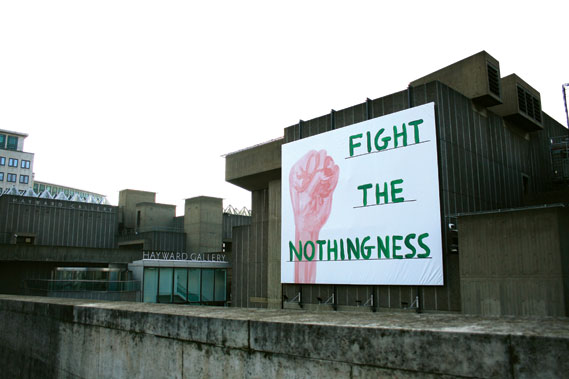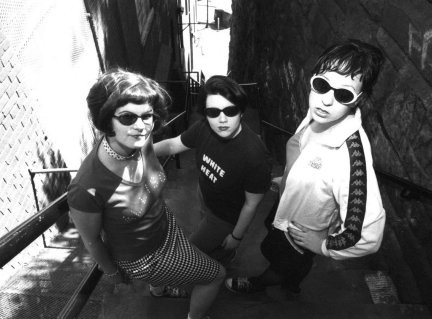Paul Davis

Paul Davis appears to be a keen observer of modern life and culture. He has described himself as a "misanthropist" and says that his work is a "reflection" of what he sees, and is keen not to describe what he does as satire. Illustrations drawn haphazardly on sheets of ruled paper appear to be first hand observations, and distance the artist from his subjects. The humour within suggests his presence, and arises questions as to whether these are truly reportage or a little joke from inside his mind, but all the same feel real, or at least a little believable.
Knowing that Davis describes his work as "reflections" distances the artist from the formula of drawing and humour and the following illustrative result. Theorist Roland Barthes suggests that when any author has written, or created a piece that "the voice loses its origin, the author enters his own death", but with Davis this removal feels intentional. The pieces are simple but seem designed to provoke thought in the viewer, whether it be a chuckle or something more profound, rather than just play on and puport the artist's feelings. He may knowingly place the viewer on a higher pedestal but, as Barthes also writes, "we shall never know, for the good reason that writing is the destruction of every voice".
However, I'm also interested in how, as a working practitioner, Davis distances himself from a lot of design culture. In an interview with The Drum he says “Clients are thinking too lazy. They’re being too safe – it’s damaging the industry and everything is becoming the same”. His aesthetic style and bold jokes are the initial suggestion of a fight against the typical, a physical fight against this.
But whilst the work may be a little wacky in comparison to a large portion of the illustration community, but I don't think it's completely void of trend, and really it is impossible to do so in a working, client lead practice, or even otherwise. His work is not wholly dissimilar to other creative practitioners, aesthetically and thematically, such as Mr Bingo and David Shrigley. Steven Miles writes that "The pivotal role of designers as a focus for social change is undermined by the fact that they are equally vulnerable to commercial reward as the rest of us". Davis may be trying to break against the wall of 'boring clients', but at the end of the day the assumption that he needs to make money from his creative practice is not an unlikely one.
Clients are customers. And at the end of the day, true originality is nigh on impossible. Barthes contends, "the writer [and in this case the artist] can only imitate a gesture that is always anterior, never original. His only power is to mix writings, to counter the ones with others, in such a way as to never rest on any of them". But maybe true originality is not what Davis is scoping for. If making brazen, brave and entertaining yet thoughtful work is good enough for Davis' fight against the boring then he may well be where he wants to be- and where he wants others to be. He is not part of the mainstream that he fears to be.










